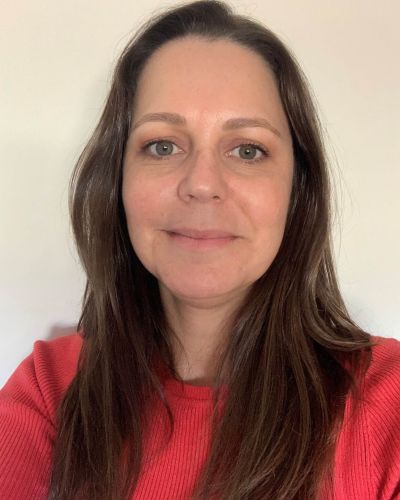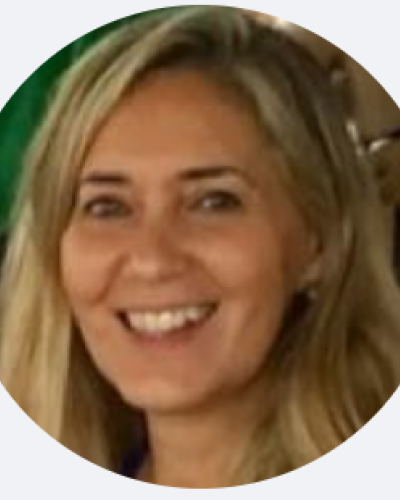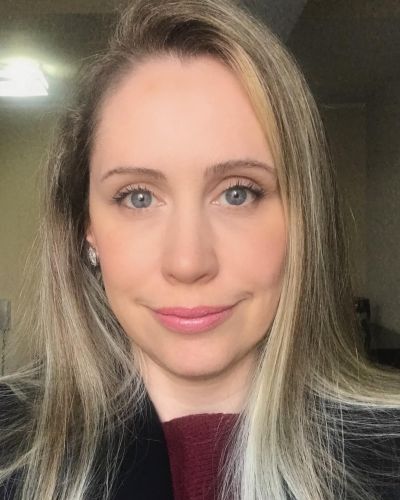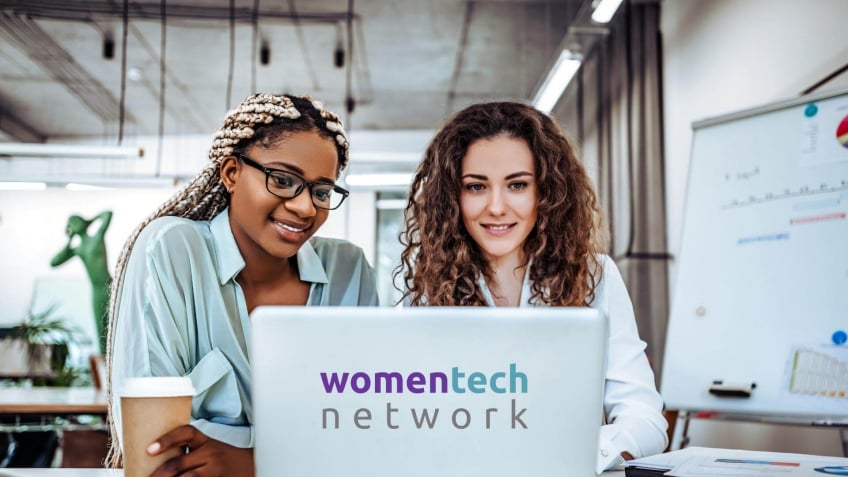Kyndryl Technical Women Advancement Program
Daniela Mainieri
Security and Resiliency ArchitectIsabel Miranda
Enterprise Architect / IT ArchitectHima Mourao
IT Specialist - IZPCA AdministratorThe Kendra Technical Human Advancement Program: Bridging the Gender Gap in Tech
Today, we discuss a program developed and tested out in Brazil for the last three years with the objective of fostering the career progression of women in the technical arena. Kendra Technical Human Advancement Program, popularly known as DFWA, is a brainchild of Zappam Miranda and her colleagues, Imacarla, a technical specialist and, a security, and a resiliency architect. They all have one common objective: to enhance women's confidence and add real value to their career.
In this program, women technical experts guide other women to become stronger, assertive, and fearless about making mistakes. Its ultimate goal? Reduce the gender gap in the technical area.
Why the Kendra Technical Human Advancement Program?
Thanks to the DFWA program, the percentage of women working in the technical field has seen a slight increase. From a low of 21% in 2020, it's moved to 23% in 2023, according to the Cartu Institute. While this may not seem substantial, it's a stepping stone and clearly shows the program's success and the potential for even more significant progress in the future. But the objective does not stop at merely growing these numbers; the goal is to change this picture globally, and the DFWA program could be the catalysis for such a change.
How the DFWA Program Functions
The program uses a cycle method where it identifies and rectifies participants' gaps via action plans set out for six months. As part of the program, the following activities occur monthly:
- Checkpoints with participants and coaches for plan review and possible corrections;
- Role model presentations;
- Progress follow-ups with coaches and the program manager;
- Collection of feedback from participants and their manager.
The Program Success
The success of the program is evident in hard numbers. The number of registrations tripled after its initial pilot phase. A pool of coaches contributes to its success as participants achieve their objectives and celebrate their victories, a fact confirmed by participants who completed the program.
Replicating the program
With such success and a clear path forward, the program is already being replicating in Costa Rica, and hopes are high that it will be spread to all countries where Kendra has a presence.
Lessons learned
Several important lessons have been gleaned from running this program:
- Open registration attracts women who have a real desire to advance their careers, which ensures appreciable participant commitment.
- Evaluating metrics and acting on them is essential to maintaining program vitality.
- Regular review of metrics also aids in understanding participant attrition.
- Dividing the participants into smaller groups for monthly check-ins has improved communication.
- The importance of responsibilities being clear in the minds of participants.
In conclusion, if you're considering starting a program like this at your company, the team behind DFWA is more than willing to help. This blog post is just the start of sharing their program – reach out to them on LinkedIn or email for more in-depth assistance!
Contact Information
Feel free to reach out to the creators of this program:
- Zappam Miranda - IT Architect at Kendru, LinkedIn: [Profile]
- Imacarla - Technical Specialist, LinkedIn: [Profile]
- [Name of the security and resiliency architect] - [Position], LinkedIn: [Profile]
Video Transcription
Hello, everybody. Thanks for coming. We are going to talk about Kendra technical human advancement program, DFWA. It's a program we developed in Brazil to leverage the women technical career.We have been running this program for 3 years. And today, We are sharing with you the program format, the result is in lessons learned as well. Next slide, please. Okay. Before I start, let's talk about the program. I would like to introduce the women who started this program. We are colleagues in Hindu with a common goal. The is a security and a resiliency architect and Imacarla is a technical, specialist. They are going to present the program through, and they will talk more about their career, themselves. I am Zappam Miranda, IIT I am IT architect in Kendru. And besides that, I'm a leader of, kindergarten, community, and cross generation, diversity, community. In that 1, we drive you how different generations can help each other.
Now I think in life is better when you run hand in hand. So we are 3 women's of technology who, have developed a career focused on the technical area. And it creates a program to help to boost women's confidence as well as adding value, in their career. Next step, please. And, what was the motivator to create to create the program? In 2020, Hindu HR implemented the the women's empowerment program. And the 1 of the pillar was the technical career. We lead together this pillar and some questions came up. What can you do to help you women moving forward in their, technical career? Make it then strong, given an opinion, and getting over the fear of failure and being more confident. Based on that, we created the DWA program.
According to Cartu Institute, in 2020, the percentage of women in you working in the technical area was 21%. And right now, into 2 in 2023, this number has increased it to 23% according to the same institute. So we had an increase of a 2.2 points percent in the women's performance. Our objective is to reduce this gender gap. And, this picture can gradually be changed with initiatives like this. Our dream is changing the this picture globally And the STWA programming can be easily, replicated. We can help you to do this and, and other companies. Lexus. Next slide, please. The program was designed to run-in ear, you know, on a yearly, cycle, supporting professional growth of technical women through a program with the executive sponsorship coaches and the women role models.
This flow shows how to run the program. Firstly, the participant and coach conducts a gap analysis and create a action plan for 6 months. And we have a monthly activities. A check point with the participants and coaches to review the plans and maybe correct it, a role model presentation for participants, a checkpoint with the coaches, and the program manager to follow the progress. And the bimonthly, I should point you with participants and the day or manager to gather feedback. The 245 steps are repeated during the cycle to continue with the flow. Next step. Next slide, please. Okay. To run the program, we define a requirements. First of all, we have a VP executive sponsor and the HR team supporting the program. The Academy Kindro created the road maps, including technical and soft rescue training. We supported diversity and inclusion. The program is open to unrestricted participation of your women.
Who wanted to develop in the technical career. We have a pool of coaches and sponsor to support all participants in terms of knowledge, and we have also a pool of a role models to guarantee monthly role model session. In terms of organization, we need people to keep the program running. For example, in the 1st wave in the 1st year, we were 3 people. And now we are a team of 9 new women in the organization. The last requirement and the most important is the participant committed this guarantee the vitality of the program. So this is what we needed to run the program. And now let's see the results and impact this with, of the program with, Imacara.
Thanks, Lisa. Hello, everyone. My name is Imacarla. I'm a assistant specialist in mainframe. And I am a a Hindu innovation community member as well. And it's a pleasure to work with Danielle and Esa on the WA program and be here sharing this program in this event. So now would you like to share some expressive numbers from for this program? It's extracted from our met is during the last 2 years. The first 1 is about the number of participants that we had in 2021. Compared with 22123. In the 1st year, we run a pilot of this program with 20 participants, select by the managers in Hindu. But in the next 2 years, we opened the subscription for all Hindu community. And then we had the the number of registrations tripled for this program.
This year, we have treated the number to 45 purchase in order to have a better control of the program. So during these 2 years, we also create a pool of codes And today, we have a 30 coaches contributing of this program. ParaMed, because we also were able to identify that the participants accomplished 210 meetings with their codes. And as a great result, we had a 108 badges acquired by the participants, and a 102 carrier plans defined were 74 were completed. I would like to highlight that these beds are not only related to technical skills, but also to soft skills. As proposed by the program, we had 22 role model sessions 1 by month during the program execution.
And the rolling models are all kingdom employees which are the experience in several technical areas. We are very proud with NPS program, NPS results, from we have is NPS from the participants. So in the last in in this last 2 years, we have a 93% in 21 and increasing this number this number to 97% in 2022. And I would like to to comment that the Global King Reserve Chips become aware of the program in 2021. And they want to know more about this program. Then we have the opportunity to participate in some round tables with CTOS CMOS to share the program details. These rounded tables were really encouraging and motivating meetings for us as members of this, the organization of the product and also for the participants of the program.
Would you like to share that this program is starting in Brazil and during the last, during the last year. It was replicated to Costa Rica, and we really hope to spread this program to all countries where our kingdom is located. And also to share this problem with our companies. And finally, as a as a recognition from our executive sponsor, We had 40 women participating in the women tech conference during this years. Now, in the next slide, we have some peak And the first 2 are pictures of sea levels with us and with some participants. And also we have our SFTP sponsor. We also give a recognition certificate to the participants and codes at the end of your cycle.
And these pictures are examples of the research the certificates. And the last picture, we have some participants of women tech events in the last year. Now, Danielle is going to share what we learn during these years running this program.
Thanks, Sima. So hello, everyone. My name is Daniel Amaniari. I'm a resilience architect in Kindro and I have 22 years of experience in IT, and I'm 1 of the leaders in the the WA program. As Emma said, right? We have been running this program for the last 3 years, and we'd like to share some lessons learned. Right? What work it and what did not work and the change we have done. Right? So we listed here a items. The first 1 that Imma touched it as well is around the participants on the way to join the program. In the past, the manager had to nominate the participants. And now we open the registration for the all the Kindro community, right, all the women in Kindro.
And the reason why we have done this change is We want to really attract to the program, the women that have the availability, and the desire to advance their careers. And and it, as Emma mentioned, right, the the number of registration to participate in program really increased it. Around metrics, since the beginning, we have been looking at the metrics to evaluate the program performance. So we look at metrics such as the number of attendees in the meetings, the number of participants, what they are doing, right, how many action plans they are defining, how many actions they are completing, their badges, their certifications, if there are job role changes or promotions.
So we've have been looking at all those on a monthly basis to understand what's working, what's not working, what we can do to to improve. This is a continuous process. On number 3, vitality of the program. I understand the participants attrition for improvements. In the beginning, right? We we don't want to to end wait until the end of the year cycle to find out that the participant has left or stop it meeting with their coach or is not taking any actions. So by looking at the metrics and talking with the participants on a monthly basis, we can Under identify that in advance and take some action to prevent attrition from the program. Another change we have done around education is to have smaller groups for the monthly checkpoint. So in the beginning, we had this 1 big checkpoint meeting with all the participants to offer help and and some of the participants will speak up, but what we have done is we we we divided the women participating in the program in smaller groups from 6 to 7.
And each 1 of us that runs the program and we are 9 now we have those checkpoints with this smaller group, and it really proven the connection, the relationship with participants because it's a smaller group. Right? Everybody has the opportunity to speak up and share what they are doing and ask for help, and we can change experiences, so it really improved that communication. Our own commitment In the past, it was up to the participants to keep their managers up to date on what they were doing at the program. But now we also we we change it that. Now we also communicate their managers on their progress, and it's a 2 ways. Right? We are communicating their managers on the progress on the program. And we are also bringing those managers closer to the program and supporting the participants. Right? They they might need help with an action from their manager support for a learning. So it brings the manager's closures close to the program.
Also around commitment, we created a social contract that clearly defines the roles and responsibilities. What's expected from a participant joining the program availability. So I'm going to we are going to look at the the social contract in the next slide. Around program vitality, as I said, we con we are continuously reviewing and coursing correct the program as we run. And we do that by looking at the metrics and also by having this feedback loop with the leadership, with the participants, with the coaches. So all the all of that information is input for us to iterate and enhance the program. And we have been doing this since the beginning. Right? This is the 3rd year. We have been changing throughout the years, throughout the years we have been running. This is the social contract that I mentioned.
It's not an extensive list of things, but it clearly states what's expected from someone that's joining the program. So we list things such as, the number of hours they need to invest in the program at least on a monthly basis. We also say they are the ones responsible for scheduling the meeting with their coach. If they don't do that, the coach are not gonna do. It's their responsibility to start that conversation is in scheduled those meetings. We also share templates with the participant So that there is this 1 pager profile that they have to fill, which is a 1 slide to present themselves who I am, what I'm known for what value I'm bringing. And there is also this action tracker where the participants have to keep track of the actions they are defining complete teams certification, everything, all all the achievements they are doing while participating in the program.
We also ask them to feed us with the metrics, the numbers, right, their achievements so that we can look at those numbers in the program It's also expected from the participants that they are joining those role model sessions that we mentioned before. So every month, we invite a guest speaker to come and talk to us, share their experiences, talk about a technical topic. So it's fact that that participant is joining those sessions. Right? They need to be active in the program, actively participating. As I said before, It's also the responsibility to keep their manager up to date on their progress on the program, on the support they need. And the last 1, right, if for any reason, a participant decides to quit the program, it could be a personal issue, availability, whatever it is. They have to communicate us, their manager and their coach, for 2 reasons. Right?
First, because we need to know who is leaving the program and who is coming, And then because we have a limited number of slots to join the program. So if someone is leaving because of availability or whatever, we can open that slot for someone else that's available right now to work on their careers. So this is the social contract. So this is our team. So it it was initially composed by the 3 of us here today. So myself is a Bellanema, and today, we are 9. And 1 nice thing to mention here is, amongst those 9 women, there are ones reaching the past participated in the program as participants, and they are now running the program with us. I think that by itself tell tells us that we are able to generate some impact and help other women to to grow and advance in their careers. Right?
It's really it's great to see that happening. I also would like to share that our executives or is a man. It's a VP here in Brazil along with his staff. They have been helping us since the beginning with ideas inside and support. And we also have sponsorship from HR. The other thing I would like to highlight that we are building with this program is this big women community. So all the participants from the previous waves and from the current wave All of them are members of the WTWA program. And and that's a great place, right, where we can exchange experiences, discuss technical and unethical topics, we can expand our network and we can also ask for help. Right? Maybe there is someone that's already working on a project that I'm working, and we can I mean, I can ask for help and we can exchange experiences? Right?
So it's a great place to expand that network. The other thing I'd like to mention is is at the end of each wave, we ask the participants, whoever wants, of course, to share some testimonials on how the program has helped them or impacted their their careers, right? And it's really, really gratifying to hear back those testimonials, sharing how we generated an impact on their careers or on their lives. It's really great. So the final message that I wanted to leave here is what do you think about starting a program like that on your company. We are here to help. You you just have to start, right? It's a easy program, is easy to run, easy to replicate. Right? Anyone can work on that and come up with this program on their companies. So with that, we end the presentation. Thank you. We can now open for questions.
And if after the presentation and after the questions, you still have other questions or you think it's a good idea to try to build a program like that on your company, feel free to reach out to us via email or linkaging. We are here to help. Thank you. So is there any questions in the q and a?
We don't have. I saw some hints. Yeah. Do you see something? I don't know.
No. We have no question. Yeah. In Q And A. Oh, there's 1. Just a second. Yeah. Is this program available in the US? Is this program available in the US? In Kyndro, probably. Right? Yeah. It's not yet, right, but we I mean, if if I don't know if whoever is asking works for Kingjoy in the US, but we can we can help, right, reach out to us on on teams on via email, and then we can discuss the same similar to what we have done for Costa Rica. Right? We shared everything that we are doing here with the team in Costa Rica, and they started to run the program. So that's possibility. Right? That's why we are here. Right? We want to expand that program and share what we have learned and what we have deployed. Yeah. Is that inside the, Kindle or not in the other company? It's it's the same for us. Yeah. Yeah.
Anyone? No more.
And and I think if anyone wants to speak instead of writing the question, you can. Right?
I'm not sure if you need it to. I want to talk. I think they don't don't have access to
talk. Okay. So if there are no questions just to reinforce, right? We are here to help. If you wanna talk a little bit more about about the program afterwards, feel free to feel free to reach out to us on LinkedIn or email. We we really are really happy to help orders to to build something like that on other companies, or, I think, intro, to to help support women in technical careers.
That's right. Thank you. Thank you. Thank you.
I think you're Kelly. Brett?








